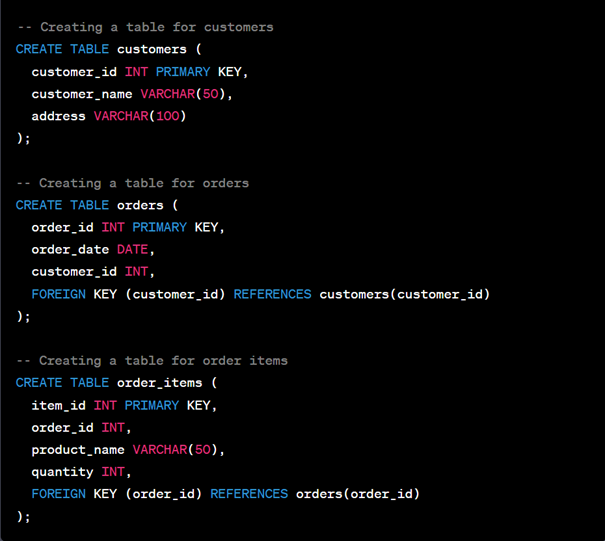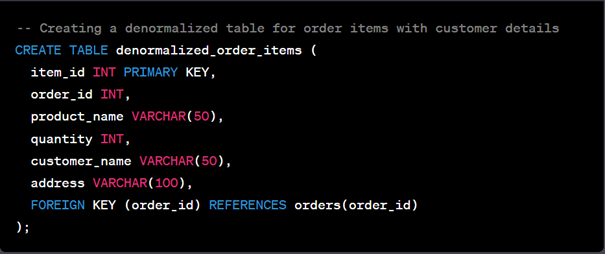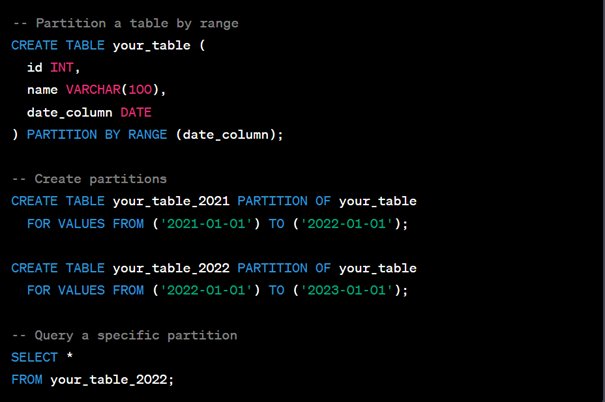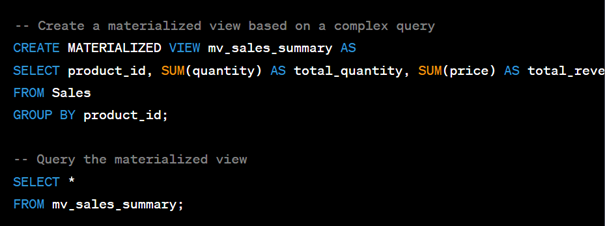Halil Kural from TTG Int.- LTD.-R&D lab.
Introduction
In today’s data-driven world, database performance plays a vital role in ensuring smooth and efficient operations for businesses. Slow and inefficient database queries can result in sluggish application performance, user frustration, and decreased productivity. That is where query optimization comes into play. Query optimization is the process of fine-tuning and enhancing the execution of database queries to achieve faster and more efficient results.
In this article, we embark on a journey through the intricacies of query optimization. We start by delving into the fundamental techniques that form the backbone of query optimization. These techniques include indexing, normalization, denormalization, query structure optimization, and hardware considerations. By understanding and implementing these fundamental techniques, you lay a solid foundation for optimizing your database queries.
But the world of query optimization does not stop at the fundamentals. As databases grow larger and more complex, advanced techniques are required to tackle the challenges they present. We will explore two powerful advanced techniques: partitioning and materialized views. Partitioning allows you to divide a massive table into smaller, manageable pieces, enabling faster and more targeted data retrieval. Materialized views, on the other hand, offer a way to pre-compute and store the results of complex queries, eliminating the need to repeat expensive calculations.
While employing these techniques is crucial, ensuring the ongoing efficiency and health of your database requires continuous monitoring and troubleshooting. We will delve into the significance of monitoring query performance using tools like EXPLAIN and performance monitoring tools. By understanding query execution plans and analyzing server performance metrics, you gain insights into potential bottlenecks and areas for improvement. Additionally, we will discuss the importance of optimizing your database schema and queries, ensuring proper indexing, efficient data types, and well-designed queries.
Whether you are a seasoned database professional or a novice eager to optimize your database performance, this article aims to equip you with the knowledge and techniques to make your database more efficient and responsive. By implementing these best practices, you can unleash the true potential of your database, delivering faster query execution, improved application responsiveness, and enhanced overall efficiency.
Join us as we explore the fascinating world of query optimization and discover how these techniques can revolutionize the performance of your database queries. Get ready to turbocharge your database and unlock new levels of efficiency and responsiveness. Let’s dive in!
- Introduction to Database Query Optimization: Database query optimization aims to enhance the execution speed of queries, leading to improved performance in database-driven applications. The following techniques can be employed for query optimization
Here’s an example query without optimization:

- Indexing: Creating indexes on tables enables the database to quickly locate the requested data, resulting in faster queries.

- Normalization: Normalizing data reduces redundancy and enhances query performance.

- Denormalization: In certain cases, denormalizing data can improve query performance by reducing the need for table joins.

- Optimizing the structure of a query, such as using proper join syntax and selective filtering, can enhance performance.

- Hardware: Upgrading hardware components like RAM and processors can positively impact query performance.
2. Understanding Database Query Execution Plans: A query execution plan illustrates the steps taken by the database engine to execute a query. Analyzing and understanding query execution plans can help identify performance bottlenecks and optimize queries accordingly.
3. Indexing for Query Optimization: Indexes play a crucial role in query optimization. By creating indexes on specific columns, the database can efficiently locate and retrieve the required data. Composite indexes can be created on multiple columns for more comprehensive optimization.
4. Using Database Statistics for Query Optimization: Database statistics provide essential information about the distribution and characteristics of data. By enabling automatic statistics generation and analyzing tables, you can optimize queries based on the gathered statistics. Leveraging statistics allows the database engine to make informed decisions about query execution plans, potentially utilizing indexes for faster data retrieval.
- Enable automatic statistics generation for your tables.
- Analyze the tables to gather statistics.
- Utilize the gathered statistics to optimize your queries.
- For example, if you want to retrieve data from a specific column, the database engine can leverage statistics to determine the most efficient retrieval method, potentially utilizing an index rather than scanning the entire table.
- You can also use the statistics to make informed decisions about query optimization, such as reordering join conditions or adjusting filter criteria.

- Understand the specific needs of each query type and their impact on performance.
- Apply optimization techniques tailored to each query type.
- For example, SELECT queries may benefit from proper indexing, while INSERT queries can be optimized by batch inserts or bulk loading techniques.
- By considering the distinct optimization strategies for each query type, you can maximize the performance of your database system across a variety of operations.
SELECT Query Optimization:

INSERT Query Optimization:

UPDATE Query Optimization:

DELETE Query Optimization:

6. Advanced Query Optimization Techniques: For dealing with large datasets and achieving optimal query performance, advanced techniques come into play.
- Partitioning: This approach involves dividing a large table into smaller partitions, making it easier to manage and query the data. Partitioning can significantly improve performance when accessing specific subsets of data without scanning the entire table.

- Materialized Views: These pre-computed views store the results of a query, allowing for quick retrieval. Materialized views are beneficial for complex and frequently accessed queries, as they eliminate the need to re-run the query every time.

Refresh the materialized view when needed:

- These advanced techniques are particularly useful when dealing with extensive data volumes and demanding query requirements. Implementing partitioning and materialized views can bring significant performance benefits to your database queries.
7. Monitoring and Troubleshooting Query Performance: To maintain an efficient database, monitoring and troubleshooting query performance are essential. Consider the following practices:
- Use EXPLAIN to understand query execution plans and identify potential bottlenecks.
- Monitor server performance metrics such as CPU usage, memory usage, and disk I/O to detect issues impacting query performance.
- Utilize performance monitoring tools like MySQL slow query log, PostgreSQL pg_stat_activity view, New Relic, or Datadog to gain insights into database performance.
- Optimize database schema and queries by implementing proper indexing, efficient data types, and well-designed queries
Conclusion: Efficient database query optimization is crucial for improving the performance and responsiveness of your database-driven applications. By implementing various techniques and best practices, such as indexing, query structure optimization, and hardware upgrades, you can enhance the speed at which queries are executed. Understanding query execution plans and leveraging database statistics enables you to make informed decisions and optimize queries based on data characteristics. Advanced techniques like partitioning and materialized views provide additional optimization opportunities for large datasets and complex queries.
To maintain optimal performance, monitoring and troubleshooting query performance is essential. By using tools like EXPLAIN, monitoring server performance metrics, and utilizing performance monitoring tools, you can proactively identify bottlenecks and optimize your database’s performance. Additionally, optimizing database schema and queries by implementing proper indexing, efficient data types, and well-designed queries further contribute to improved query performance.
By employing these seven essential techniques for effective database query optimization, you can unlock the full potential of your database, achieving faster query execution, improved application responsiveness, and enhanced overall efficiency.
References and further reading materials that can provide more in-depth information on query optimization techniques:
- “High-Performance MySQL: Optimization, Backups, and Replication” by Baron Schwartz, Peter Zaitsev, and Vadim Tkachenko: This book offers comprehensive coverage of MySQL query optimization techniques, including indexing, query structure optimization, and advanced topics like partitioning and materialized views.
- “Database Systems: The Complete Book” by Hector Garcia-Molina, Jeffrey D. Ullman, and Jennifer Widom: This textbook provides a thorough understanding of database systems, including query optimization concepts, algorithms, and strategies.
- “SQL Performance Explained” by Markus Winand: This book focuses on understanding and improving SQL query performance. It covers indexing, statistics, query optimization, and other related topics.
- PostgreSQL Documentation: The official documentation for PostgreSQL provides extensive information on query optimization techniques specific to PostgreSQL. It covers topics like query planning, indexing, statistics, and performance monitoring.
- MySQL Documentation: The official documentation for MySQL offers detailed explanations and examples of query optimization techniques specific to MySQL. It covers query execution plans, indexing, and optimization hints.
- Oracle Database SQL Tuning Guide: This guide, specific to Oracle Database, provides in-depth information on SQL query tuning and optimization techniques. It covers topics like query optimizer statistics, hints, and plan stability.
- Microsoft SQL Server Documentation: The official documentation for Microsoft SQL Server includes articles and guides on query optimization techniques for SQL Server. It covers query plans, indexing, and performance monitoring.
- “Mastering PostgreSQL 13” by Hans-Jürgen Schönig: This book covers various aspects of PostgreSQL, including query optimization techniques, indexing strategies, and performance tuning.




